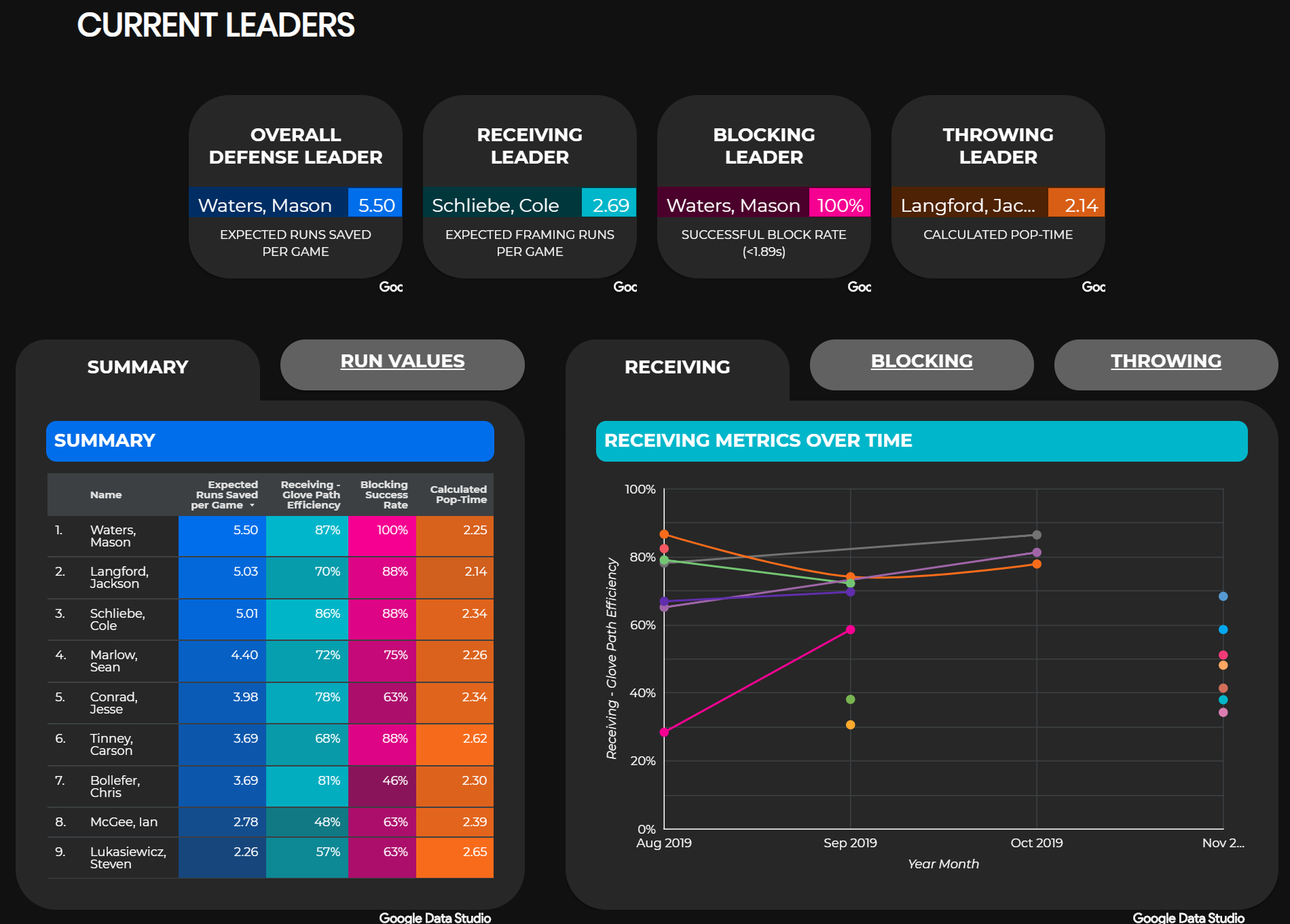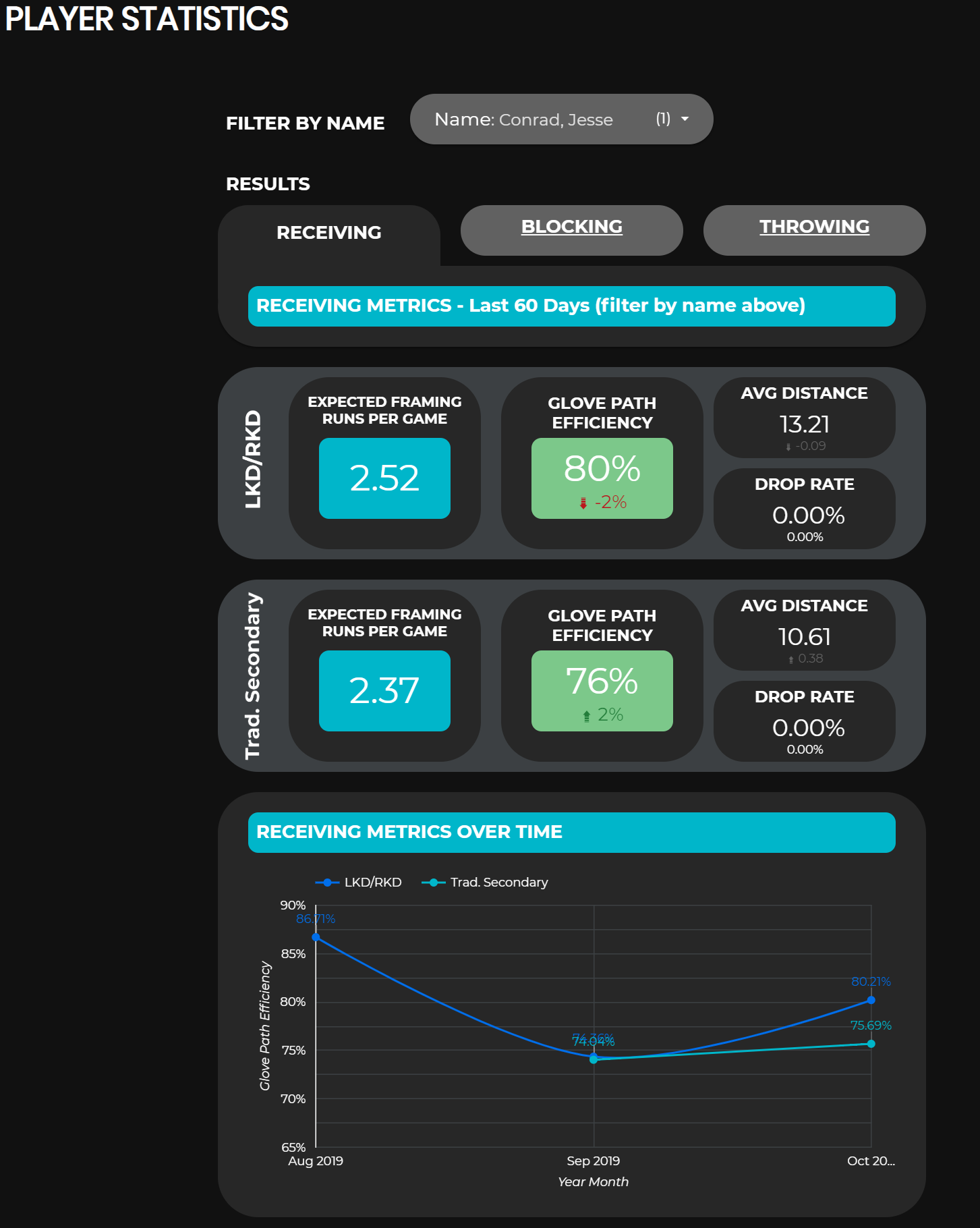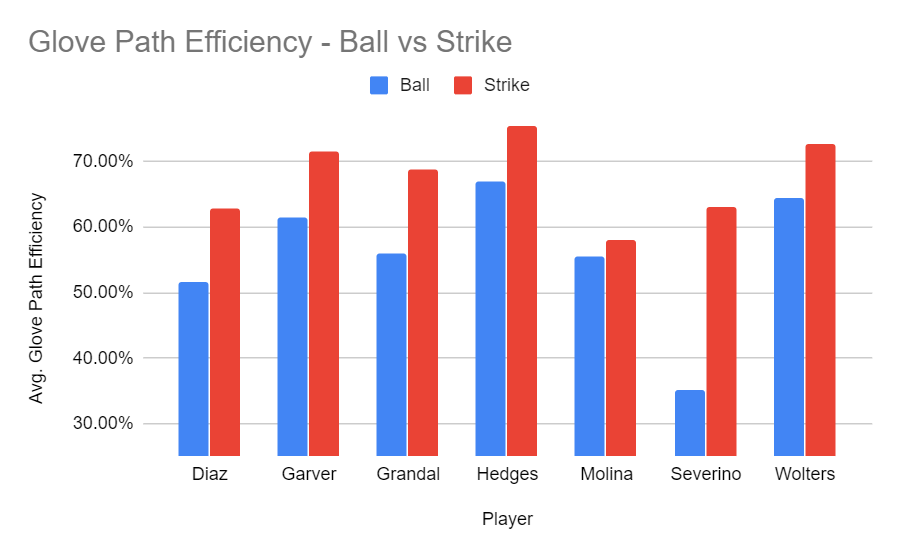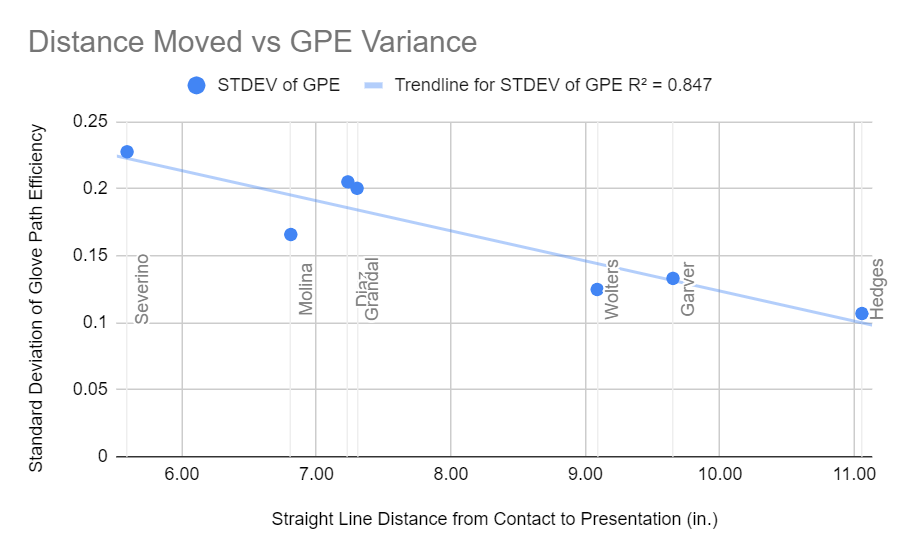Want more great
Catching Content?
Sign up for FREE and see everything we have to offer!
I am a big believer in using data and metrics to guide player development. As a coach it helps me identify specific skills or movements that are negatively affecting results, it helps me remove any biases I might have based on how I played or how I was taught and focus on what is best for each individual, and it provides me with feedback on whether a player is improving and by how much (crucial information when self-evaluating my performance as a coach).
But for as much benefit as I get out of it as a coach, if presented correctly, I believe it can be even more powerful for the players. The additional feedback an athlete receives through metrics can empower them to take more ownership of their own development. They can see what skills they need to improve, they can track their progress, etc. But most importantly, it helps move a player’s focus away from trying to please the coach and receiving praise, to focusing on improving his/her skill set.
Current State of Catching Metrics
When it comes to catching, there are not many tools available that gather catcher metrics. Pitching and hitting have seen a boom in technology aids resulting in a growth of our understanding of the associated mechanics and movement patterns. But catching hasn’t seen the same innovation.
- A couple years ago I started trying to find a tool I could use to aid in developing receiving among the catchers I work with. I set out with the following goals:
- Provide meaningful receiving metrics that correlate with increased strike calls
- Must be simple enough high school athletes could understand
- Provide visual feedback to players to aid in comprehension
The Metric: Glove Path Efficiency
I’ve ended up settling on measuring what I call Glove Path Efficiency (GPE). It is not a perfect metric that encompasses all the factors that go into receiving, but it has proven to be a very useful tool in both evaluating catchers and as a teaching aid. So what is GPE?
Glove path efficiency (GPE) is a percentage of how close to a straight line the catcher’s glove moves from where the ball first contacts it to where it is presented. The more the glove travels in a straight line between those 2 points, the more efficient the movement is and the higher the GPE value. If the catcher boxes a baseball down or to the side before pulling it back up, it results in a lower efficiency score.
Glove path efficiency is essentially measuring how “clean” a catch is. Any wasted motion or unintended glove movement after the baseball contacts the glove is highlighted by this measurement. It is calculated as follows:
[Straight Line Distance] / [Distance Glove Travels]
*Distances are measured between when the baseball first contacts the glove and final presentation of the pitch.
How is GPE used in training athletes?
While GPE itself is a simple measurement. It allows players to experiment with different techniques during practice and see how they affect results. A player’s glove approach to the baseball, the glove position at contact, and timing of when the glove gets to contact position all play a role in glove movement after contact with the baseball.
In the video above we can see the difference of approaching a low pitch from above the baseball (left) and from below the baseball (right) with a similar glove position at contact in both examples. Players can experiment with different techniques such as extension to flexion vs flexion to extension. The resulting GPE measurements provide the player with not only what mechanics lead to better results, but a measurement of how much better.
By using GPE, providing players with video (like the one above), and allowing players to experiment with different techniques, we have seen an increase in player intent during receiving work and an increase in player understanding of how their movements pre-contact affect glove action post-contact.
Gathering GPE data also allows us to create competition among the catchers in their receiving performance. Leaderboards such as the one below allow players to compare themselves to their peers and strive for the top spot.

Players are also provided with an interactive stats dashboard allowing them to take a deeper dive into their personal metrics. Simple visualizations allow them to compare how different stances affect their results, how their performance has improved over time, and gain a better understanding of what skills need the most attention.

Does a Higher GPE Equal More Strike Calls
As with all metrics, it’s important to make sure that what we are measuring correlates with actual game results. To check this, I ran a small study of several MLB catchers to see if a higher GPE meant more strike calls. I measured the GPE of 7 catchers covering the range from above average receivers to below average receivers. I compared their average GPE on bottom-zone gained strikes (below the zone but called a strike) to their average strike rate in the bottom shadow zones.

Although the sample size is small (both in number of catchers and number of pitches analyzed), the chart indicates that there is a positive correlation between Glove Path Efficiency and Strike Rate at the bottom of the zone. The catchers that move their glove more efficiently appear to get more low strike calls on average.
*Wolters appears to be an outlier from the sampled catchers. He has a high average GPE but a low strike rate. This may be explained by other techniques Wolters employs that are not measured by GPE but may adversely affect strike rate, such as using flexion to extension (pushing through the ball) on low pitches or utilizing a “thumb roll” glove action when presenting the ball.
GPE - Gained vs Lost Strikes
I also wanted to see if there was a correlation between GPE and ball calls. To evaluate this I compared average GPE on lost strikes (pitches inside the zone called balls) and GPE on gained strikes (pitches outside the zone called strikes).

For each player analyzed (with the exception of Y. Molina), there was a significant drop in average GPE on in-zone pitches called balls vs out-of-zone pitches called strikes. This supports what most catcher’s already know, if you catch a ball poorly it is more likely to be called a ball. GPE appears to be an effective measurement of this.
Maintaining Consistency in Glove Path Efficiency
Because GPE looks to be a significant factor in influencing an umpires perception of where a ball crosses the zone, I also wanted to take a look at what leads to a more consistent GPE. The thought being if we are more consistent in maintaining a high GPE we can minimize lost strikes and maximize gained strikes. The strongest correlation tied to GPE consistency (from what I measured) was distance between initial glove contact and presentation.

The graph above indicates that catchers such as Hedges, Garver, and Wolters who tend to present low pitches at neck/chin level (moving the ball >9in.) have a more consistent GPE than catchers that minimize movement between contact and presentation.
Conclusions from the GPE Study
This study is too limited in its scope to say that GPE is the only factor in improving a catcher’s strike rate. In fact it is almost certainly not the only factor. It does not take into account varying techniques such as extension to flexion vs flexion to extension, nor does it address the impacts of glove movements such as a thumb roll, body movement of the catcher, or different stances.
I do believe the results show enough of a correlation that GPE likely plays a significant role in how an umpire perceives pitch location and can be a useful tool in developing receiving skills on pitches low in the zone.
The Power of Using GPE
There are two aspects to measuring GPE that have been game changers:
- Allows for tracking of short duration improvements during off-season development. No more waiting to compile live game data before you can put some numbers to a players receiving improvement.
- It provides a standardized measurement for evaluating a catcher’s receiving ability. No more grading a catcher’s receiving on an arbitrary 1-5 scale during tryouts. We can now put true unbiased values on how well each catcher receives.
Want more great
Catching Content?
Sign up for FREE and see everything we have to offer!


